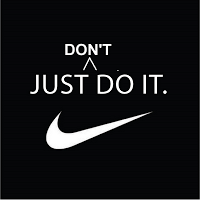Testimonials are, in many ways, a lot like case studies. A case study is designed to present a problem or challenge, to demonstrate how the problem was resolved, and then to highlight the results. Good testimonials also contain those three elements. Let’s take a look at them individually.
#1 The Challenge
What problem was the person facing and why hadn’t they solved their problem?
Here’s an example of a problem for a weight loss supplement testimonial. I was 100 pounds overweight and struggling to lose weight. Though I’d tried more than a dozen diets, I’d been unsuccessful. I actually gained weight!
#2 The Resolution
The resolution is where the client simply states how your product or service changed their life. How did it solve their problem? This is also a great place to quantify the results. Results are always more powerful when they can be quantified.
Here’s an example of a resolution or the middle part of your testimonial.
ABC Supplement changed it all. One simple natural remedy and my metabolism started picking up. It affects trace minerals in your body -minerals essential for optimal health and a fired-up metabolism. Once I started losing weight, dieting and exercise began to work more quickly. I lost more than ten pounds a month and over 110 pounds in total.
#3 Conclusion
In the conclusion you’ll use emotion to truly persuade the reader. How has this success made your life better or easier? How did this success make you feel?
With ABC supplement, losing weight was no longer a battle. I lost 110 pounds and I feel better than ever. My doctor says I’m in the best shape I’ve ever been. I wish I’d known about ABC years ago but I’m glad I found it when I did.
Motivating Your Clients to Write Testimonials Like These
Sure, it’s easy to see why testimonials with these three core elements are successful. But how do you motivate your clients to write their testimonials in this powerful format? It’s difficult. Many clients don’t understand how to write an effective testimonial. They probably want to write one for you but chances are they just don’t know how.
Write it for them!
One of the easiest ways to make your client’s life easier and to ensure you get the testimonial you need is to write one for them. For example, you might create a folder with three to five different testimonials in it. Your client can choose the one they want, make any changes they desire, and sign it. You might be surprised how many clients appreciate this convenience.
Create a template.
Another way to accomplish the same thing is to create a template testimonial. Your client can fill in the blanks and make changes to the template as they see fit. It gives them a little more control over the testimonial but still helps ensure you get the content you need.
Ask questions.
Finally, if you receive a testimonial from a client and it doesn’t quite fit your needs, you can ask a few questions like, “Could you tell me how you were dealing with the problem before you came to me?” and “How did you feel once you’d tried my product/service?”
You can then simply ask if you can add that information to the testimonial. Be sure to get their approval before you publish it.
Testimonials are essential tools to help persuade, build credibility, and strengthen your brand. Make your testimonials strong ones with these three core elements.
And now I would like to invite you to claim your copy of my new training “3 Mistakes Business Owners Make That STOP Them Getting More Clients … And How You Can Avoid Them” when you visit http://www.EndMarketingOverwhelm.com/3-mistakes
You’ll learn the 3 common mistakes most business owners make that keep them from getting more clients and powerful, but easy to implement, strategies to avoid them, recoup more of your time, and learn how to spend it more wisely to get more clients and more results.
© 2013 Deanna Maio – Business Growth & Marketing Strategist at http://www.DeannaMaio.com


